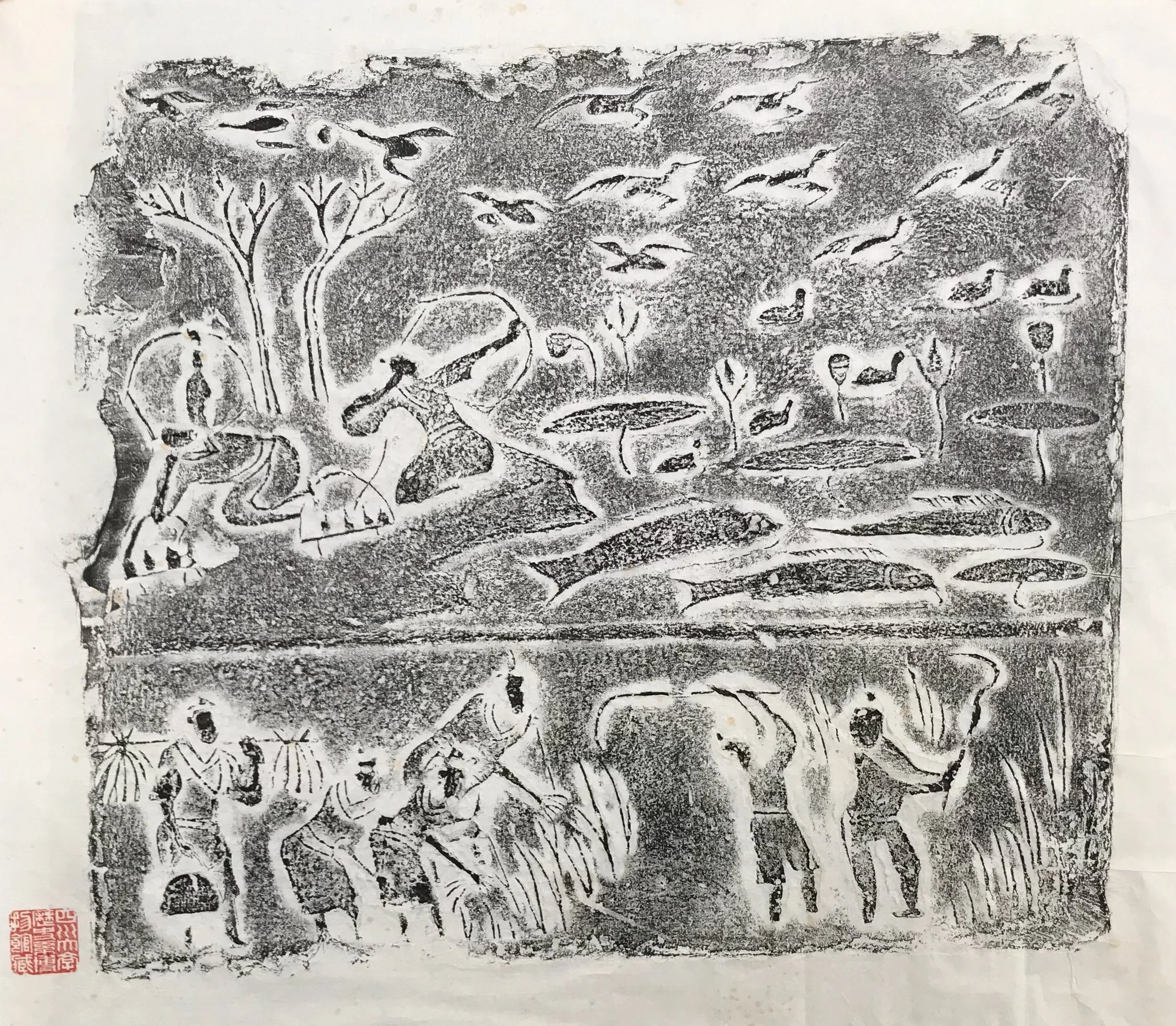Contempor'ati
Fostering The Legacy of Exceptional Artists
Shooting birds by a lake and harvest scene. Molded pottery tile from the wall of a tomb. Later Han Dynasty. Sichuan Provincial Museum.
Chinese Rubbings
Stone carvings were one of China’s earliest art forms and formed the basis of Chinese literati painting. Rubbings are ink on xuan paper copies of carvings of calligraphy or designs on metal, stone or other materials. Rubbings are the world’s first copies and art prints.
According to Kenneth Starr in his book Black Tigers, it is unclear precisely when the practice of rubbing ancient carvings began. From Starr’s research, the practice likely began in the Han (206 B.C. to 220 A.D.) or the Tang (618-906 A.D.).
The United State is the home to significant collections of Chinese rubbings. The Field Museum in Chicago has the largest collection of rubbings in the United States, followed by University of California, Berkeley and Harvard University.
Contempor’ati is fascinated by the evolution of China’s rich art history from ancient Chinese carvings and rubbings. We are committed to furthering the digitization of Chinese rubbings so scholars and aficionados of Chinese art have an extensive database for in-depth research and study.
